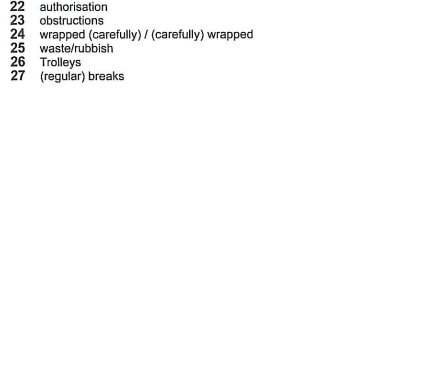Your cart is currently empty!
Category: Reading Module
-
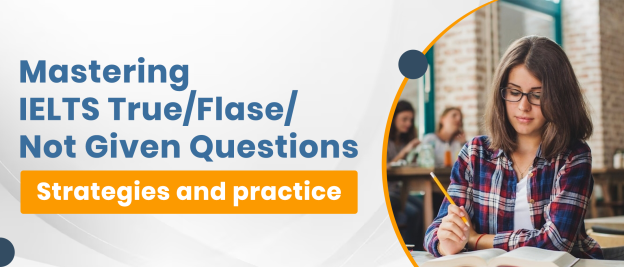
Mastering IELTS True/Flase/Not Given Questions – Strategies and practice
Introduction
The International English Language Testing System (IELTS) is a well-known test that judges how well non-native English speakers can communicate in English. The True, False, Not Given (TFNG) question type is one difficult question style that frequently presents a significant barrier for test-takers. In this blog post, we’ll discuss how to answer TFNG questions effectively and give you a sample passage and the solutions so you can practise.
Understanding True/False/Not Given
The purpose of IELTS TFNG questions is to evaluate how well you can accurately understand the specifics and implied information in a given passage. Here is what each choice means:
- True: The information in the statement matches the information in the passage.
- False: The information in the statement contradicts the information in the passage.
- Not Given: The information in the statement is not discussed or mentioned in the passage.
Strategies To Mastering True False Not Given Question
Skim the passage: To get a general understanding of the subject and the main ideas put forth, start by quickly skimming the passage. You can become more familiar with the situation by reading this introduction.
Read the Question: Read the TFNG question carefully, making sure to underline any words or phrases that call attention to a particular piece of information. Keep an eye out for negation words like “not” or “never,” as they can alter the statement’s meaning. Also check for qualifying words like ‘some’ ‘any’, ‘many’, ‘little’ etc
Mark Keywords– While reading the question it is very important to mark the keywords of the question, so as to locate them in the paragraph. You must take care while marking words as those words that add an important meaning to a question must be taken care of. Even the minor details like article ‘a’ ‘an’ and ‘the’ can sometime change the meaning. Always mark those words that carry important meaning.
Scan Keywords of the question: It’s the time when you need to look for particular word in the paragraph. These are the words from the questions. Reread the passage with the query in mind, looking for details that specifically respond to the statement. Look for alternative words or phrases that could be used in place of the question’s keywords.
Comprehend and understand the location: One you identify the loaction it is crucial to understand the information of the paragraph and relate it with the statement. Mark the statement as “True” if it accurately reflects the information. Mark the claim as “False” if there is convincing evidence to the contrary. Be careful not to confuse contradictory information with information that is merely withheld, though.
Check the “Not Given” options: Mark something as such if it doesn’t match any of the information in the passage. Do not assume the solution based on your prior knowledge or logical inferences.
Major reason why we get confused between False and not given.
In the IELTS Reading Test, common questions include true, false, not given. You will be asked to identify information in a text, then reading statements and deciding if they are true, false or not given. Using Tips tricks and strategies can not only help you to solve it faster but also accurately.
Assumptions-
Students often assume the information. In IELTS We need to go by the writers viewpoint. Look for evidence, when you start assuming it means you need to recheck the statement.
For Example – The amount of foreign language users has increased in recent years.
TRUE- If in paragraph they are referring to the increase in foreign language speaker it will be true
FALSE– If contradiction is there (decline in users of other languages) then it is clearly False
Not Given – If statement states that ‘there are many foreign language users’ We cannot assume that it increased or decreased. It is something undefined in the paragraph. So answer would be not given.
Practice Passage with Answers:
Passage
The Amazon rainforest, known for its incredible biodiversity, is home to numerous plant and animal species. It is often referred to as the “lungs of the Earth” due to its ability to produce a significant amount of oxygen through photosynthesis. However, the rainforest is currently facing severe threats due to deforestation. The loss of trees not only reduces oxygen production but also contributes to climate change by releasing large amounts of carbon dioxide into the atmosphere.
Do the following statement agrees with the information given in the text
Statement 1: The Amazon rainforest is the most biodiverse ecosystem on Earth. Answer: True
Statement 2: The Amazon rainforest is responsible for all oxygen production on Earth. Answer: False
Statement 3: Deforestation in the Amazon rainforest does not contribute to climate change. Answer: False
Statement 4: The Amazon rainforest is mainly composed of coniferous trees. Answer: Not Given
Conclusion
The IELTS exam’s True, False, Not Given questions call for a combination of attentive reading, critical thinking, and comprehension of the passage. You can increase your accuracy in responding to these difficult questions by skimming the passage, picking out important details, and assessing statements in light of the offered options. Don’t forget to regularly practise using model passages to improve your comprehension abilities and succeed on the IELTS exam. Good fortune!
The diverse population of Singapore makes it a culturally rich place to live. It is welcoming for people with various cultural experiences to study or work without feeling out of place. Apart from this, the quality of education and the career opportunities available make Singapore an ideal destination for young students. With modern infrastructure and student-friendly cost of education, Singapore is rapidly becoming an educational hub for students who want to travel outside of India to study.
Adding to that is the global acceptance of the degree, and the chance of securing placement is also higher. Since Singapore is one of the popular business hubs in South-East Asia, you will find many large corporations have their presence here and recruit candidates from local universities.
-
Product on sale
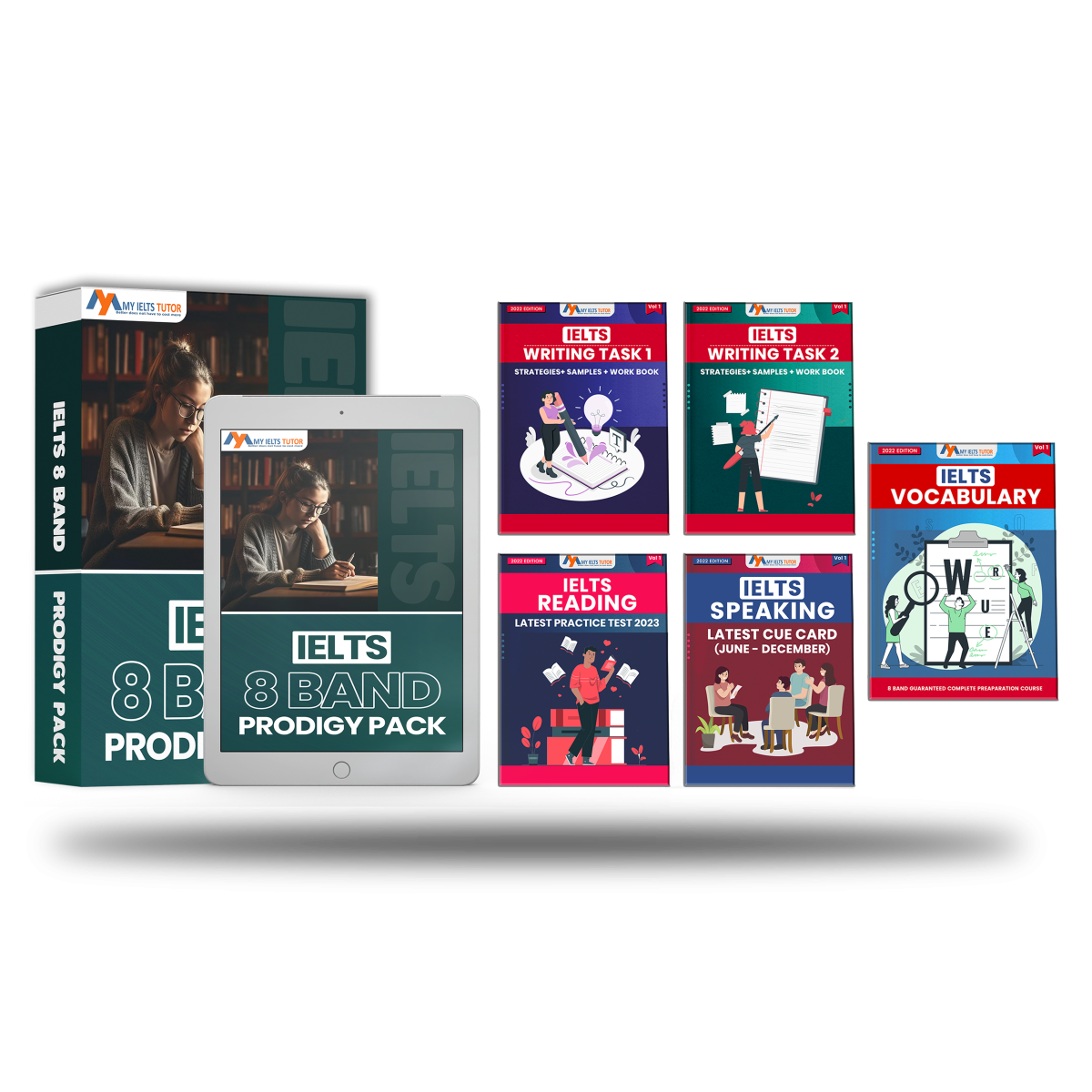 IELTS 8 Band Prodigy Pack – IELTS Complete Prep E-books (General Training)Original price was: $89.00.$29.00Current price is: $29.00.
IELTS 8 Band Prodigy Pack – IELTS Complete Prep E-books (General Training)Original price was: $89.00.$29.00Current price is: $29.00. -
Product on sale
 IELTS 8 Band Prodigy Pack – IELTS Complete Prep E-books (Academic)Original price was: $89.00.$29.00Current price is: $29.00.
IELTS 8 Band Prodigy Pack – IELTS Complete Prep E-books (Academic)Original price was: $89.00.$29.00Current price is: $29.00. -
Product on sale
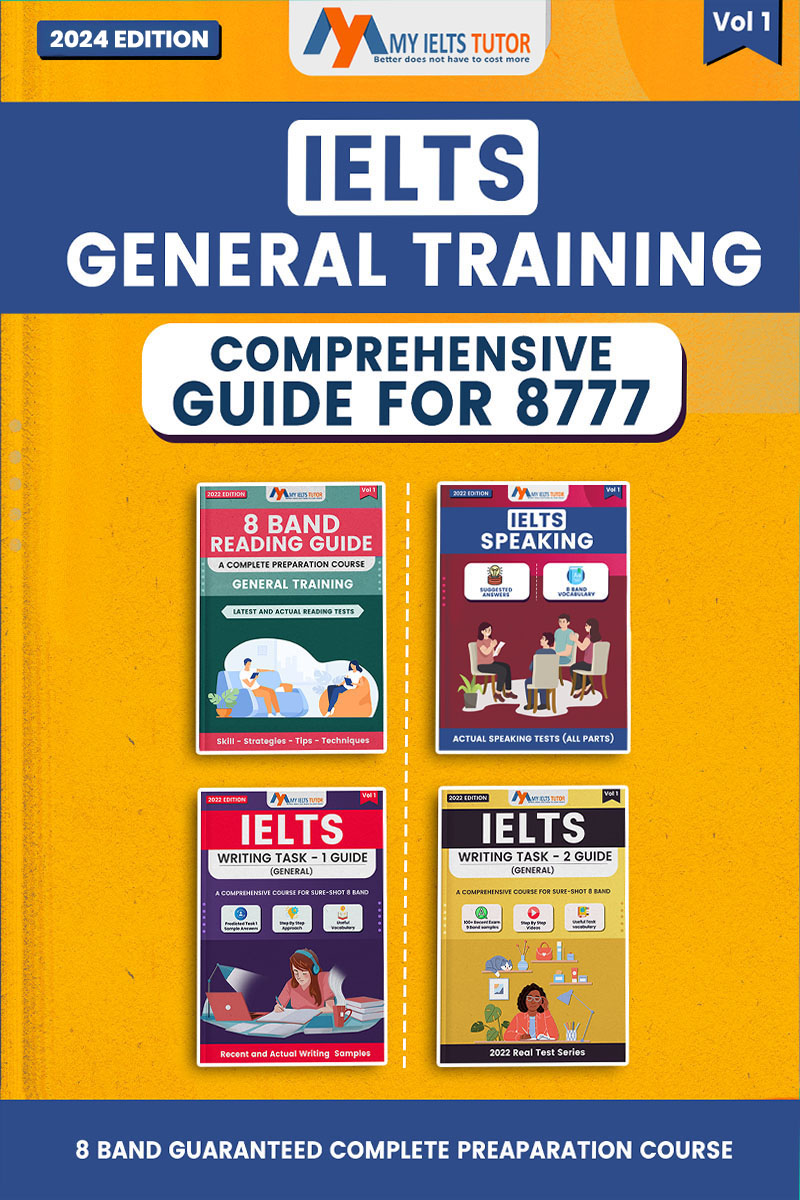 IELTS Preparation- General Training Combo (Comprehensive Course for 8777)Original price was: $99.00.$49.00Current price is: $49.00.
IELTS Preparation- General Training Combo (Comprehensive Course for 8777)Original price was: $99.00.$49.00Current price is: $49.00. -
Product on sale
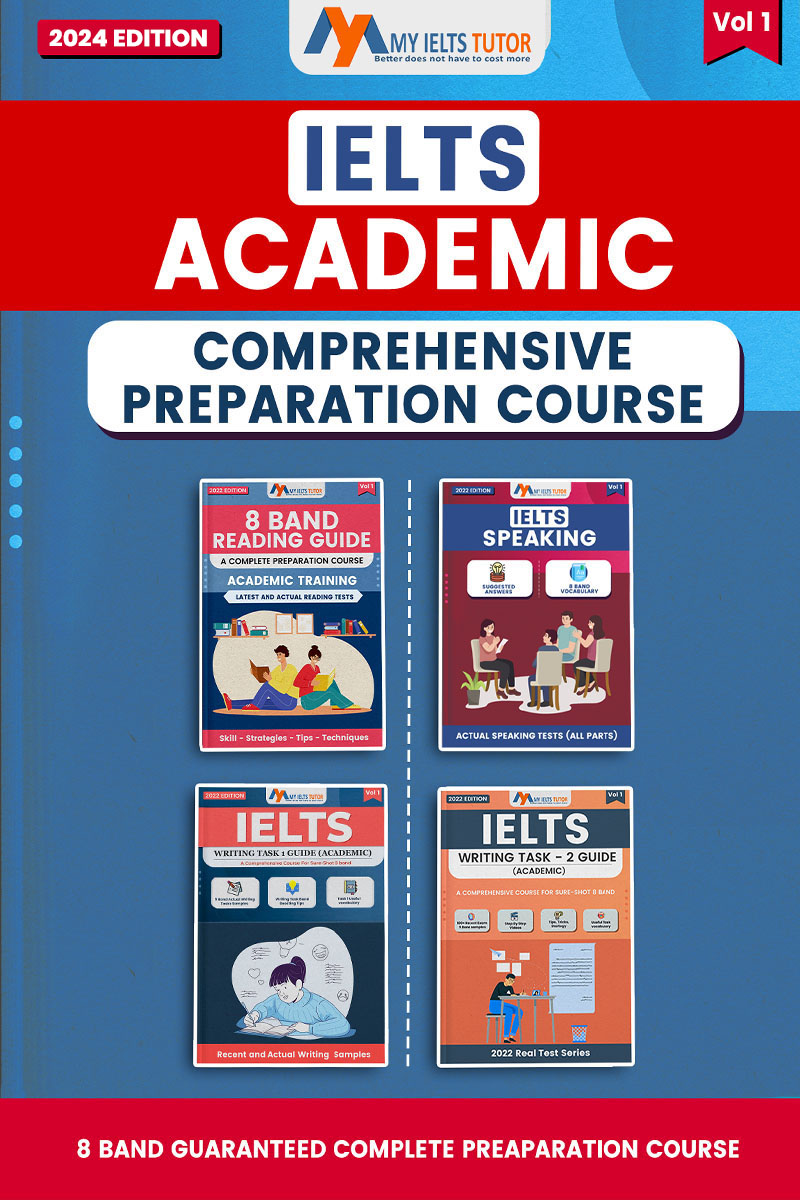 IELTS Material (Academic) – A Comprehensive 8 Band Material (All Modules In one)Original price was: $99.00.$49.00Current price is: $49.00.
IELTS Material (Academic) – A Comprehensive 8 Band Material (All Modules In one)Original price was: $99.00.$49.00Current price is: $49.00. -
Product on sale
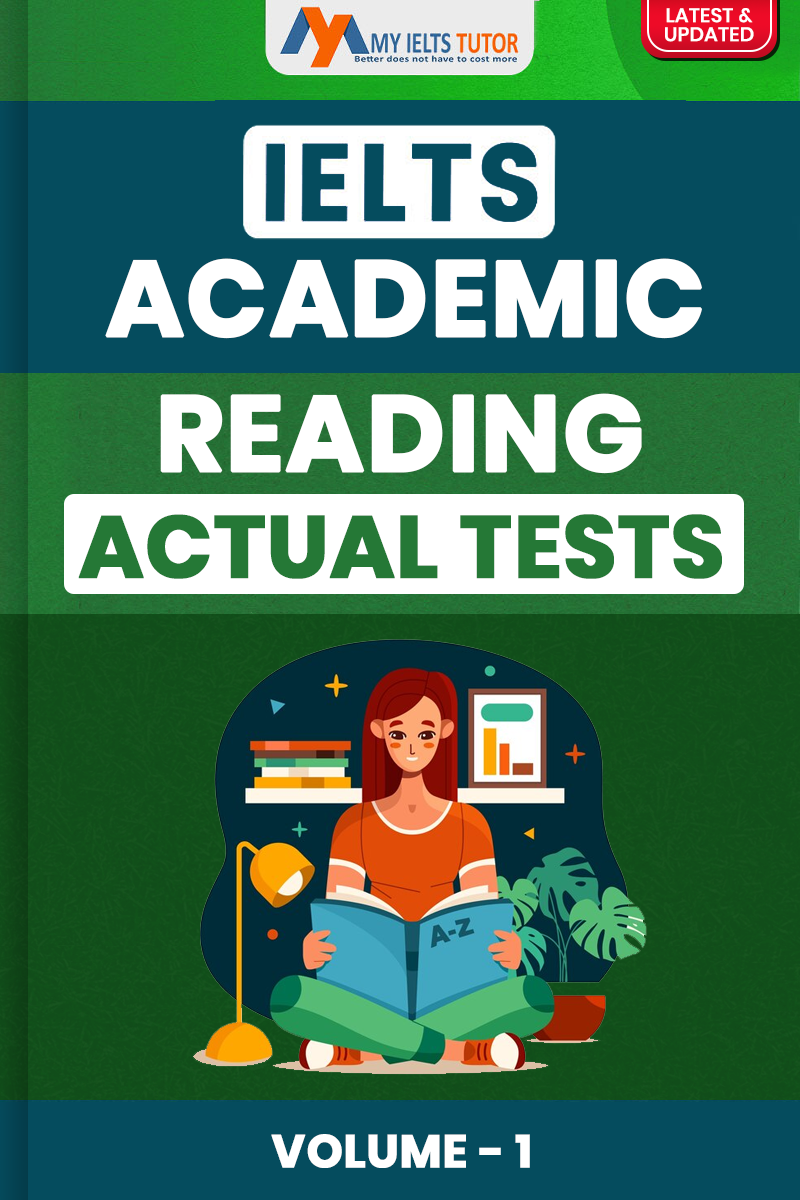 Best IELTS Academic Reading – Actual Reading Tests (Volume-1) 2025Original price was: $59.00.$19.00Current price is: $19.00.
Best IELTS Academic Reading – Actual Reading Tests (Volume-1) 2025Original price was: $59.00.$19.00Current price is: $19.00. -
Product on sale
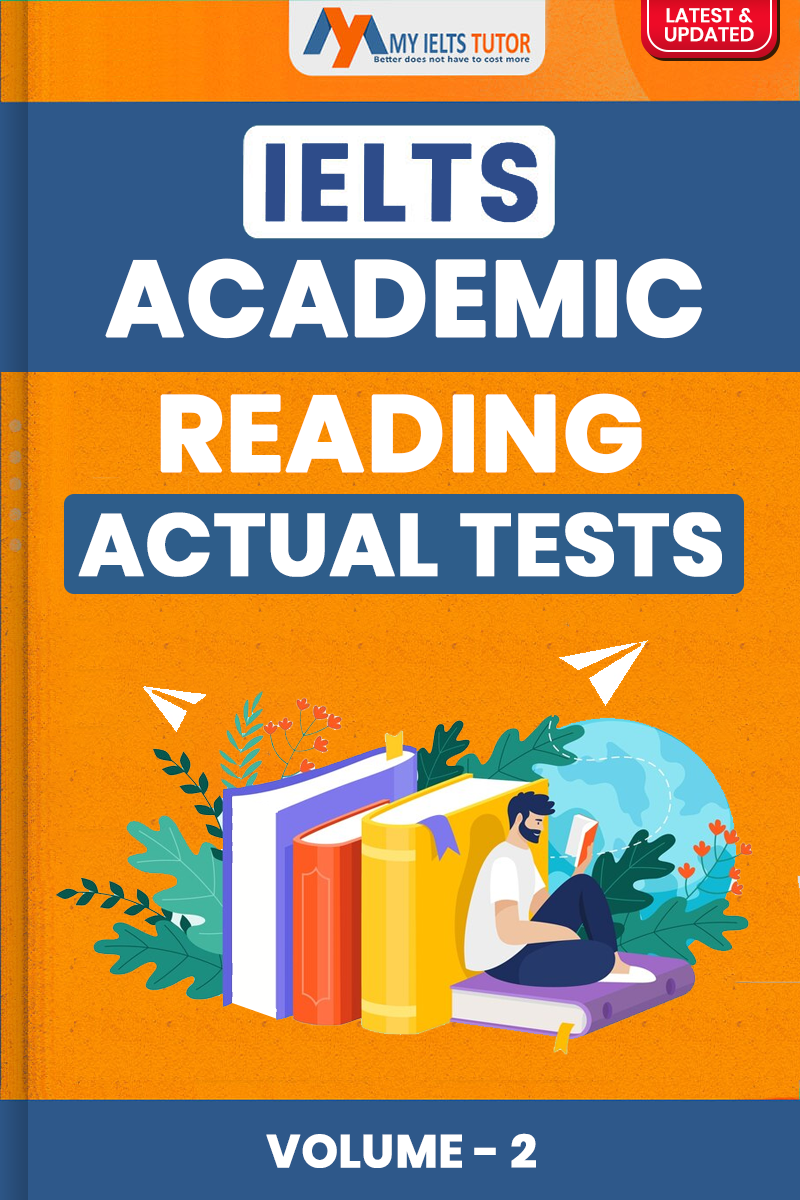 IELTS Academic Reading – Real Reading practice tests (Volume- 2) 2025Original price was: $59.00.$20.00Current price is: $20.00.
IELTS Academic Reading – Real Reading practice tests (Volume- 2) 2025Original price was: $59.00.$20.00Current price is: $20.00. -
Product on sale
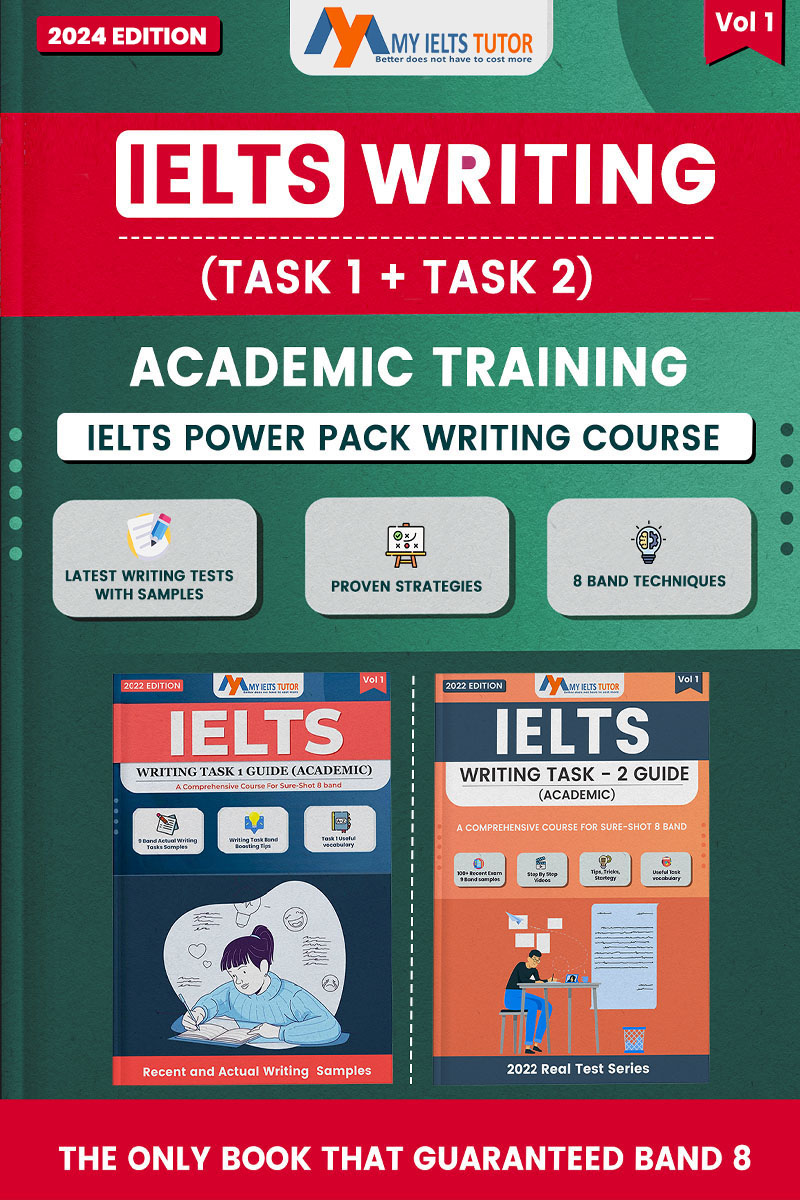 IELTS writing (Academic) -A complete 8 band writing guide (2025 Edition )Original price was: $59.00.$29.00Current price is: $29.00.
IELTS writing (Academic) -A complete 8 band writing guide (2025 Edition )Original price was: $59.00.$29.00Current price is: $29.00. -
Product on sale
 IELTS Academic Reading E-book – A Book With Actual Reading Tests- 2024 EditionOriginal price was: $69.00.$35.00Current price is: $35.00.
IELTS Academic Reading E-book – A Book With Actual Reading Tests- 2024 EditionOriginal price was: $69.00.$35.00Current price is: $35.00. -
Product on sale
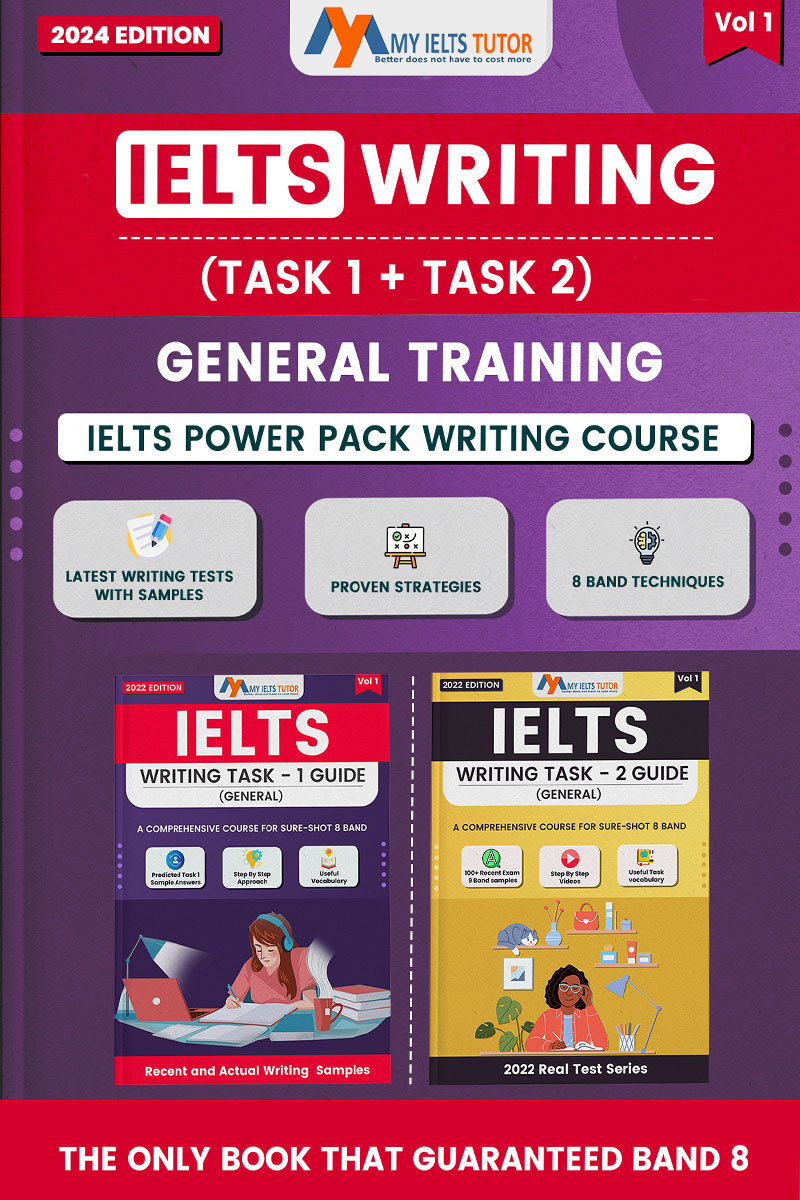 IELTS Writing (General Training) -A complete 8 band writing guide (2025 Edition )Original price was: $59.00.$29.00Current price is: $29.00.
IELTS Writing (General Training) -A complete 8 band writing guide (2025 Edition )Original price was: $59.00.$29.00Current price is: $29.00.
-

IELTS Reading Matching Headings – Important Tips and Strategies with Solved Sample
The very challenging question type for the IELTS Reading section of the exam is Matching Headings. As you proceed, you will see me revealing a few important tips and strategies to easily solve Match the Headings of IELTS reading.
IELTS Reading Matching Headings Tricks, Tips, and Strategies
Firstly, before we dig into tips and tricks, the following is the Reading Match the Headings question type format.
Such questions usually occur in section 3 of the IELTS Reading. The format follows a list of headings along with paragraphs to match.
Learn as we solve;
Here the paragraph is about “Efforts to save a special bird – the spoon-billed sandpiper.”“Last year, an international team of ornithologists devised a bold plan to rescue one of the world’s rarest birds. Gerrit Vyn reports.”
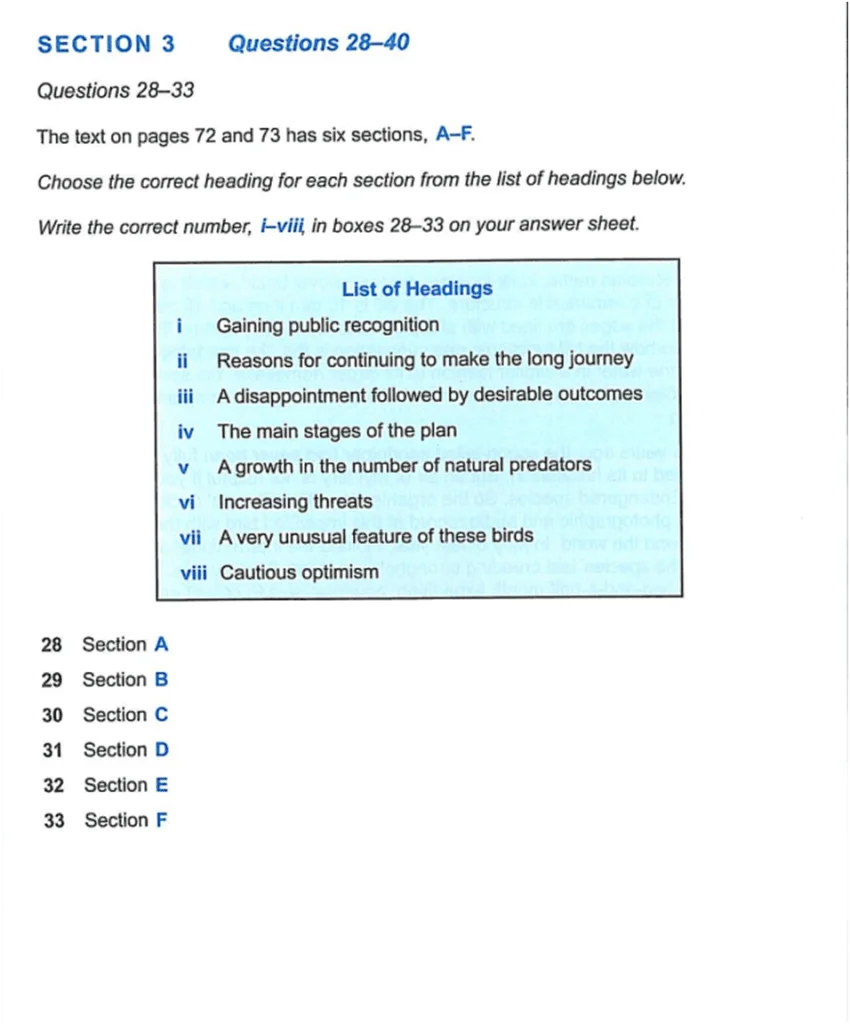
The most fundamental tip to solve Match the headings is paraphrasing the passage first and then looking out for the most appropriate heading as the answer. Rephrasing is essential because, generally, the exact words as paragraphs are not used in the headings.
Secondly, one can most commonly find the answer to the headings of body paragraphs of the passage in the first & second sentence itself. The introductory paragraph & conclusion has tricks to follow, which are discussed at the article’s end.
Have a look at body paragraphs & solve:

In this paragraph, in the first sentence, the writer talks about fully documenting a special bird that has never been possible in years. As I mentioned, generally, the answer to body paragraphs is in the first & second sentences.
Let us look at other sentences; an air of mystery is not helpful…. Decided to produce photographic & audio records. Rephrase – ‘Birds Russia’ planned on preparing a documentary of the bird and how to do that is mentioned in the stages to proceed in the further sentences.
Now get back to headings, iv – The main stages of a plan fully satisfies our paragraph & are the correct answer.

Here, in this paragraph C, in the first sentence, it is mentioned why (reason) birds travel such great (long) distances. Option heading two is the Reason for continuing to make the long journey is the correct answer.
Solve Paragraphs D & E on your own. The answer to these questions is given below the paragraphs.


Paragraph D – vi Increasing Threats
Paragraph E – iii A disappointment followed by desirable outcomesTo solve the reading passage with Matching Headings types easily, quickly, as well as correctly the first step is to solve body paragraphs. This step not only helps to answer the four basic questions accurately but also helps to eliminate options for the toughest question types.
The trick to solving the most challenging part of the reading passage, the headings to match for introductory & conclusion is playing with the options. For example,
headings ii, iii, iv, & vi are already marked as answers meaning we are only left with i, v, vii, & viii.
If you begin answering from the first passage itself, it becomes confusing. Solve it in this unique way & surprisingly, you will have all the correct answers in hand.
Introduction Paragraph :

In this paragraph, there is no description of the general public or their recognition or growth in the number of birds; Cautious Optimism means someone has a feeling of confidence knowing the difficulties.
vii A very unusual feature of these birds
Conclusion :

If we look at the concluded passage, the rescue plan is available to save birds from being extinct despite the difficulties mentioned. So the answer is, viii – Cautious Optimism.
Read more :
Academic Writing Task 1 Sample
IELTS Listening – How to Answer Short Questions?
IELTS Listening – Matching Questions. How to solve accurately?
-

IELTS Reading – True or False, Not Given Questions: Tips and Tricks to Solve.
In the Reading module of the IELTS exam, a maximum number of aspirants face the issue of time management despite its given prerequisite of solving 40 questions in 60 minutes. All the questions are objective, yet reading the passage and understanding its real meaning is complex considering this module. A question type of IELTS Reading – True or False is so complicated for candidates to lose their
marks. Are you also facing difficulties in Readings True or False, Not Given? I will share essential tips and tricks to level up your score bands for this question type.What is True, False, Not Given?
IELTS Reading – True or False, Not Given Questions
In this question type of IELTS Reading module, a passage is given in the form of a conversation or information on a particular topic. The candidates must read the course and answer in True, False, or Not Given. The response is correct if the answer matches the below criteria.
● True means the information or the statement in the question agrees with the information given in the passage.
● False means the information or the statement in the question does not agree and contradicts the information presented in the passage.
● Not Given means there is no mention of the statement or the information asked in the question.Let’s understand how to solve the following IELTS Reading – True, False, Not Given Question;
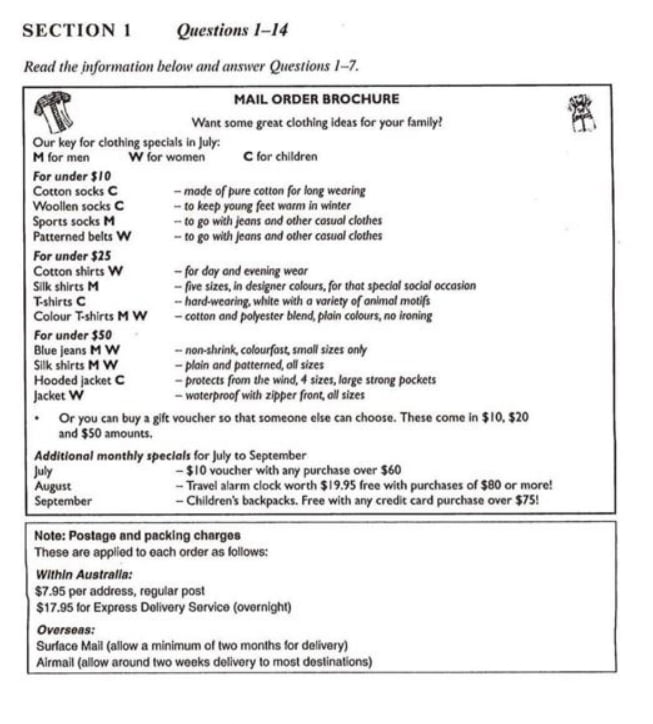
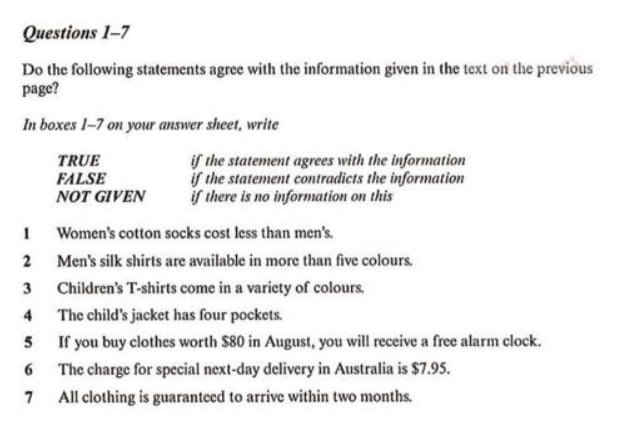
IELTS Reading: True, False, Not Given Tips and Tricks
The following are a few essential tips and tricks accompanying the sample question. Understand and know how to solve this topic and be a pro.
Tip 1: Read the Passage
Firstly, read the passage and understand the meaning of the information given. Consider the above topic MAIL ORDER BROCHURE, where clothing ideas are presented for Men, Women, and Children. Here the prices are mentioned for products ranging from socks, belts, shirts, t-shirts, jeans, and jackets for July. There is also a mention of the gift voucher, specials for July, August, and September, Postage and
packing charges within Australia and overseas. Candidates must keep in mind what information the passage delivers and where.Tip 2: Understand the Questions
Let’s begin with the questions;
1) Women’s cotton socks cost less than men’s
Meaning: The cost of women’s cotton socks is less compared to men’s cotton socks.
Passage: There is mention of cotton socks for children, not for women or men. Men’s
sports socks are talked about but not cotton. Therefore, there is no information about
the cost comparison of cotton socks for men and women.Answer: Not Given.
2) Men’s silk shirts are available in more than five colors.
Meaning: Silk Shirts for men are there in five colors and more.
Passage: Silk Shirts for men – five sizes, in designer colors, for that special social occasion.
In the reading, five represents sizes and not colors. However, there is mention of colors but in a variety and not a specific number. So, the information in the passage contradicts the question.
Answer: False.
3) Children’s T-shirts come in a variety of colors.
Meaning: There are color options in T-shirts for children’s.
Passage: T-shirts C – hard-wearing, white with a variety of animal motifs.
The color option available is only white. A common trap is there is a variety of animal motifs. So, the information in the passage contradicts the question.
Answer: False.
5) If you buy clothes worth $80 in August, you will receive a free alarm clock.
Meaning: An alarm clock is free for cloth bought worth $80 in August.
Passage: August – Travel alarm clock worth $19.95 free with purchases of $80 or more.
Here, the use of paraphrasing is done to trick the candidates. Use of buy instead of purchase, missing the words Travel, $80 or more in the question. However, the information agrees with the question.Answer: True
Solve Questions 4, 6, and 7 yourselves.
Tip 3: Answers in Order
In the IELTS Reading module, all the sections have the questions with their response in order. For example, question 2 always precede the 3rd and succeed the 1st question. This trick helps save time while answering the last questions as their answers will never be in the upper part of the passage.
Tip 4: Have an eye on the next question
Why have an eye on the next question beforehand? While responding to the IELTS Reading True or False question types, the candidates must read the following question before because, as I mentioned, the answers are in order. You will have the solution to the question you respond to before the next
follows. This trick aids aspirants to react accurately and effectively without wasting time. Save time in any way you can to score high bands in IELTS Reading.Tip 5: Answer Correctly
Now that you are aware of how to solve Readings True False questions with secret tips and tricks, understand to respond precisely. Do not get confused with the similar question type, YES or NO, meaning answering Yes instead of True will lose you marks. Many candidates, at times, also respond with the letter T rather than the whole word ‘True’ and later get disappointed; the essential advice is to answer rightly.
Check your answer sheet for mistakes to get your desired band scores for your IELTS scorecard whenever you get time during the exam period.
-

IELTS Reading – Matching Paragraph Information Quickly and Accurately.
One of the frequent question types occurring in the IELTS Reading test is Matching paragraph information with the correct option. Having an excellent approach to solving this question can make you confident in advance, saving a lot of time. Therefore, today I will share some essential tips and strategies to answer Matching Paragraph Information quickly and accurately to boost your score.
IELTS Reading – Matching Paragraph Information
In matching the paragraph information questions, the candidates will be given the data in paragraphs in the reading text to pair with the correct information from a set of 3 to 6 statements. This data can be in the form of a description of a topic, facts, opinions, explanations, predictions, reasons, challenges, or likewise.
For example, check the below question to know how it appears in the actual IELTS Reading exam.
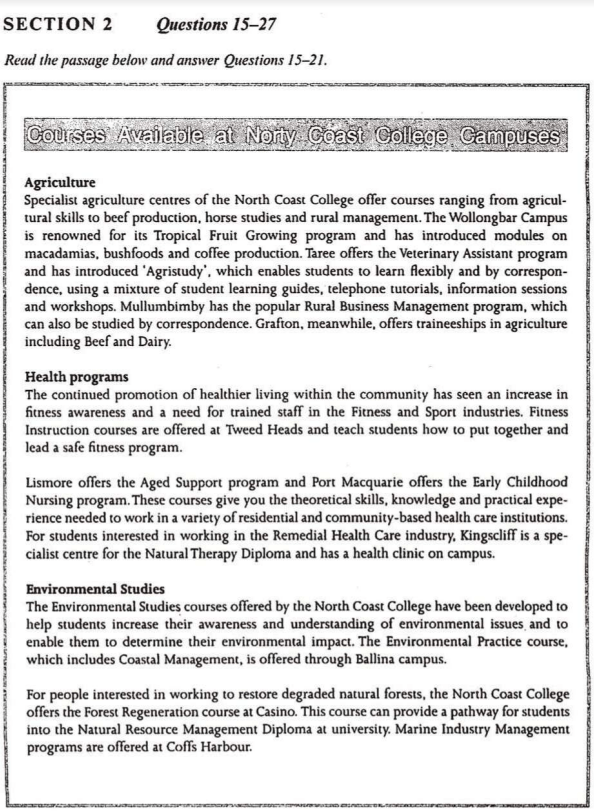
The above passage gives data on the courses available at Norty Coast College Campus. There are three categories of courses: Agriculture, Health Programs, and Environmental Studies. The candidates need to match each campus with the field of study available there. There are 7 campuses to pair accurately with 11 areas of study.
How to answer Matching Paragraph Information quickly and accurately to boost your score?Firstly, understand what this question type tests?
‘Pair the Information’ question type assesses the IELTS aspirant’s ability to read the detailed passage, scan for particular information, skim and focus on main ideas of the text, understand and identify synonyms, and know to paraphrase.
IELTS Reading Matching Paragraph Information Tips & Strategies
The following are essential tips and strategies for IELTS Reading Matching paragraph information questions. Follow them to answer effectively.
Read the Instructions as well as Statements.
The first and foremost step is to read the instructions and statements carefully. Instructions are crucial to keep in mind as aspirants require to answer in a manner the examiner guides. Moreover, statements lead to primary keywords to be aware of the required answers.
Answers are not in Order.
Recognize that the answers are not in a sequence in the IELTS reading module, unlike other exam modules. Therefore, you need to look for specific information, keywords, or the main idea to find the answer.
Solve Questions you are sure about
After reading the statements, have an eye on the paragraphs and look for your correct response. First, answer the easiest one or the ones you are sure about. Words with similar names, numbers, and places can be easy to scan and respond to.
Paragraphs may have more than one answer.
Moreover, there are possibilities of having more than one answer in a paragraph as the question is about matching information from the Reading, and there are more statements than paragraphs. One strategy is making notes to point out where in the section the data is.
Look for specific information and not main ideas.
At times, the information does not match the main idea but the statement in the paragraph. On account of which the candidates must pay heed to every word of the reading text.
Synonyms and Paraphrasing
Considering IELTS Reading, the text consists of many synonyms and paraphrases to trick the students. Synonyms and Paraphrasing are crucial to boosting the score in IELTS Reading because it ensures whether the candidate can process the same data and statements in different ways. Having a strong vocabulary can be a win-win situation to score high bands.
Method of Elimination
If nothing works, the method of elimination does. The candidates can use this method to eliminate options and choose the best. There are 50% chances of getting the answer right utilizing this technique.
Let’s solve the above sample using these tips and strategies.
15) Wollongbar
Statement in the passage: The Wollongbar campus is renowned for its tropical fruit growing program and has introduced modules on macadamias, bushfoods, and coffee production.
Here, synonyms are used to mislead the candidates towards the wrong response. Further, the examiner didn’t question the campuses, Taree and Mullumbimby, that follow Wollongbar in the Agriculture part of the reading text to waste students’ time.
Vocabulary
Tropical Fruit: A fruit grown in warm conditionsMacadamias: A tree native to Australia, producing nuts.
Bushfoods: Australian Food
Answer: Option B – Banana Cultivation as Banana is one of the most important
tropical fruits.
16) Grafton
Statement in the passage: Grafton, meanwhile, offers traineeships in agriculture, including Beef and Dairy.While looking at the fields of study, the word cattle relates to beef and dairy. Cattle farming is raising cattle until they produce milk for consumption. Beef cattle farmers look after cattle until their adulthood for most beef.
Answer: Option H – Cattle Farming.
17) Tweed HeadStatement in the passage: Fitness Instruction courses are offered at Tweed Heads and teach students how to put together and lead a safe fitness program.
Tweed Heads is all about health and fitness.
This is the trickiest one; let’s look at similar fields of study.
E – elderly care, however, is the care or safety program; the main idea of this campus
does not involve the concern of the elderly.G – herbal therapy, the course is about treating students to be fit but not through herbal treatment.
J -animal health, the health of animals instead of students, is nowhere mentioned.
K – Recreational programs involve activities for enjoyment, relaxation, or pleasure. However, exercising is not a recreational program entirely but being fit relaxes and gives pleasure and satisfaction to a human being.
Answer: Option K Recreation Programs.
18) Lismore
19) Port MacquarieStatement in the passage: Lismore offers the aged support program, and Port Macquarie offers the early childhood nursing program.
The most obvious response to the aged program is elderly care, so the correct option for 18 is E.
For question 19, early childhood means infant, so the right choice is D – infant illness.
20) BallinaStatement in the passage: The Environmental practice course, which includes Coastal management, is offered through Ballina Campus.
Coastal Management means protecting the area of the coast, i.e., the beach. So the answer is I – Beach Protection
21) Coffs Harbour
Statement in the passage: Marine Industry Management programs are offered at Coffs Harbour.
Marine means something of the sea or found in the ocean. There is a field of fish farming related to marine, which is true.
Accordingly, as mentioned in the tips, the examiner in the above sample question had mapped out all the strategies. It involved the trickiest question, few options to respond to directly, and some with a lot of synonyms to match the information. Therefore it is quintessential for the candidates to be attentive to what’s coming in their way for the IELTS exam to score effectively. -

IELTS Reading – Fill in the Blanks Tips Tricks & Strategies
Preparing for the IELTS exam, especially the IELTS Reading module, can be challenging for some aspirants. To not make you stand on the same side, today, in this article, I will cover IELTS Reading’s frequently asked question type; Fill in the Blanks, its Tips, Tricks & Strategies along with a solved practice sample to not miss out on any answer on blanks thereafter. After following the reading, you will be able to get an 8 or 9 band score in IELTS Reading.
IELTS Reading – Fill in the Blanks Tips, Tricks, and Strategies
In this question type of reading module, the candidates must fill the missing blank area of the statement depending on the information the reading passage highlights. Fill-ups are one of the complex questions because the examiner groups the passage & statements with synonyms, idiomatic words, and paraphrasing techniques to ensure the English language proficiency of IELTS aspirants.
Acknowledge the fact that similar words as in the reading passage are not given in your statements or options and therefore be attentive while solving IELTS Reading – Fill in the Blanks.
IELTS Reading – Fill in the Blanks practice sample
First, try to solve the following practice sample of IELTS Reading – Fill in the Blanks yourself.
Reading passage:
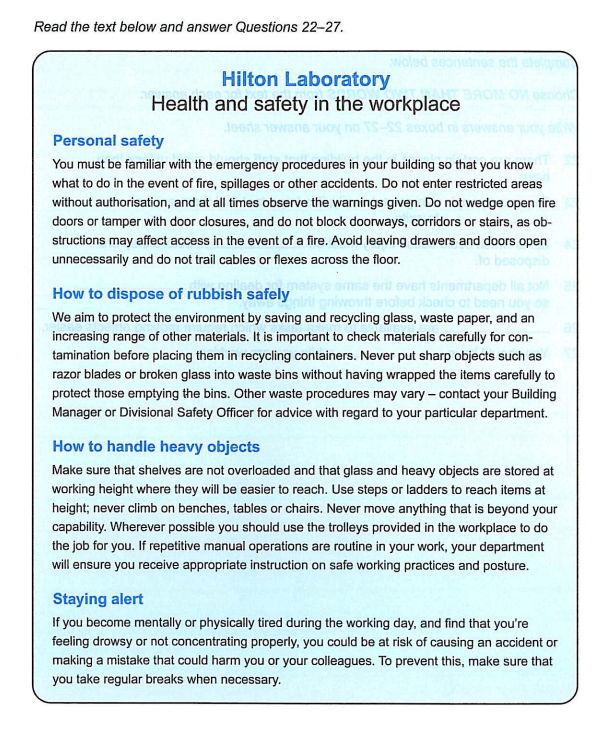
Instructions and Fill in the Blanks:
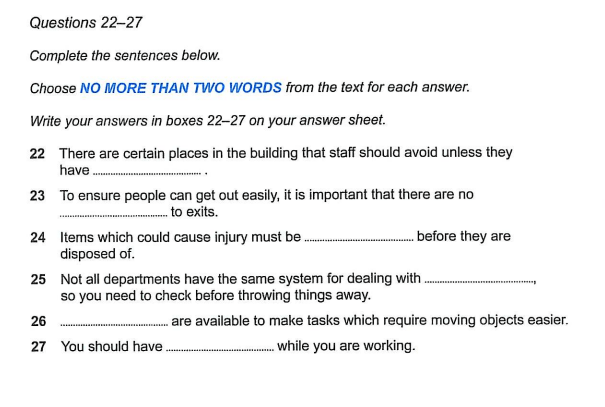
The above passage is on the health & safety measures undertaken by the staff of Hilton Laboratory, including directions of personal safety, how to dispose of rubbish safely, how to handle heavy objects, & staying alert while working. Additionally, the examiner instructs the candidates to not use more than two words in their response to the above fill-ups.
Fill in the Blanks Tips
Tip 1 – Mark the correct Paragraph.
The first and foremost step to follow, without missing any time, is to point out the correct paragraph to find an answer to a particular question. For example, question 24 is Items that could cause injury must be _______ before they are disposed of. In this statement, the word dispose of & injury indicates that the answer is in the second Paragraph, heading how to dispose of rubbish safely. Next, question 26 talks about moving objects easily, meaning those heavy because heavier things are hard to move from one place to another.
Note:
22 – 1st Paragraph
23 – 1st Paragraph
24 – 2nd Paragraph
25 – 2nd Paragraph
26 – 3rd Paragraph
27 – 4th ParagraphTip 2 – Maintain the order
This type of question has statements parallel to the reading passage meaning your answers will be in order so that if you are unable to answer any, you have a 70% chance of responding accurately by the method of guessing.
Tip 3 – Avoid Examples
The key to solving IELTS Reading Fill in the Blanks questions quickly as well as accurately is to avoid examples from the reading passage as your answers. Examples are added by the examiner to waste the time of candidates and confuse them with the right answer.
Fill in the Blanks Tricks
Tricks to solve the above sample quickly.
22) There are certain places in the building that staff should avoid unless they have_______.
Step 1 – The answer lies in.
1st paragraph.
Step 2 – Check for similar synonyms
Synonym – Places: areas
Avoid: restrict
Unless: withoutStep 3 – Underline the correct line
Do not enter restricted areas without authorization.
Step 4 – Find & Write your correct answer Authorization23) To ensure people can get out easily, it is important that there are no ____ to exist.
Step 1
1st paragraph
Step 2
Get out easily: affect accessStep 3
Do not wedge open fire doors or tamper with door closures & do not block
doorways, corridors, or stairs as obstructions may affect access in the event of a fire.
Step 4
The examiner has paraphrased the sentence adding examples of obstructions that can
affect the ease of access to people in the event of a fire or emergency.
Therefore, the correct answer is obstructions.24) Items that could cause injury must be _______ before they are disposed of.
Step 1
2nd paragraph.Step 2
Sharp objects are items that can cause injury Before they are disposed of means the examiner is looking for an answer to items that can cause injury to people after their disposal. Therefore, the accurate answer is a safety measure to undergo before disposal.
Step 3
Never put sharp objects such as razor blades or broken glass into waste bins without
having wrapped the items carefully to protect those emptying the bins.Step 4
The correct answer is Wrapped (carefully) / (carefully) Wrapped.
25) Not all departments have the same system for dealing with ___ so you need to check before throwing things away.Step 1
2nd Paragraph
Step 2
Same system: procedures
Check: contact
Step 3
Other waste procedures may vary – contact your Building or Divisional Safety Officer for advice with regard to your particular department.Step 4
Procedures are associated with waste so the correct answer is Waste
26) _______ are available to make tasks that require moving objects easily.
Step 1
3rd Paragraph
Step 2
Here the examiner has used both Synonyms and paraphrasing technique
Provided: available
Do the job for you: Make tasksStep 3
Never move anything that is beyond your capability. Whenever possible you should use the trolleys provided in the workspace to do the job for you.
Step 4
The correct answer is Trolleys
27) You should have _____ while you are working.
Solve this yourself with the above tricks.Answers:
